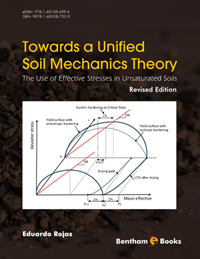Abstract
SHS investigation development is considered from the geographical and historical viewpoint. 3 stages are described. Within Stage 1 the work was carried out in the Department of the Institute of Chemical Physics in Chernogolovka where the scientific discovery had been made. At Stage 2 the interest to SHS arose in different cities and towns of the former USSR. Within Stage 3 SHS entered the international scene. Now SHS processes and products are being studied in more than 50 countries.
Abstract
The phenomenon of hysteresis during wetting-drying cycles can be simulated by the porous-solid model developed in chapter 3. This model employs the current pore-size distribution of the material. The term “current pore-size distribution” means that the size of pores can be updated as the soil deforms. In that sense, the porous-solid can be used advantageously for the development of fully coupled hydromechanical constitutive models as the influence of the volumetric deformation on the retention curves and effective stresses can be easily assessed. This is done by including some experimental observations related to the behavior of the pore size distribution of soils subjected to loading or suction increase. This methodology avoids using any additional parameter or calibration procedure for the hydro-mechanical coupling of unsaturated soils.
Keywords:
Effective stresses, Evolution of pore size distribution, Hydromechanical coupling, Hysteresis, Loading, Macropores, Mean size of pores, Pore size distribution, Porous-solid model, Soil-water retention curves, Suction increase, Unsaturated soils, Volumetric reduction, Volumetric strain.
Recommended Chapters
We recommend

Authors:Bentham Science Books






